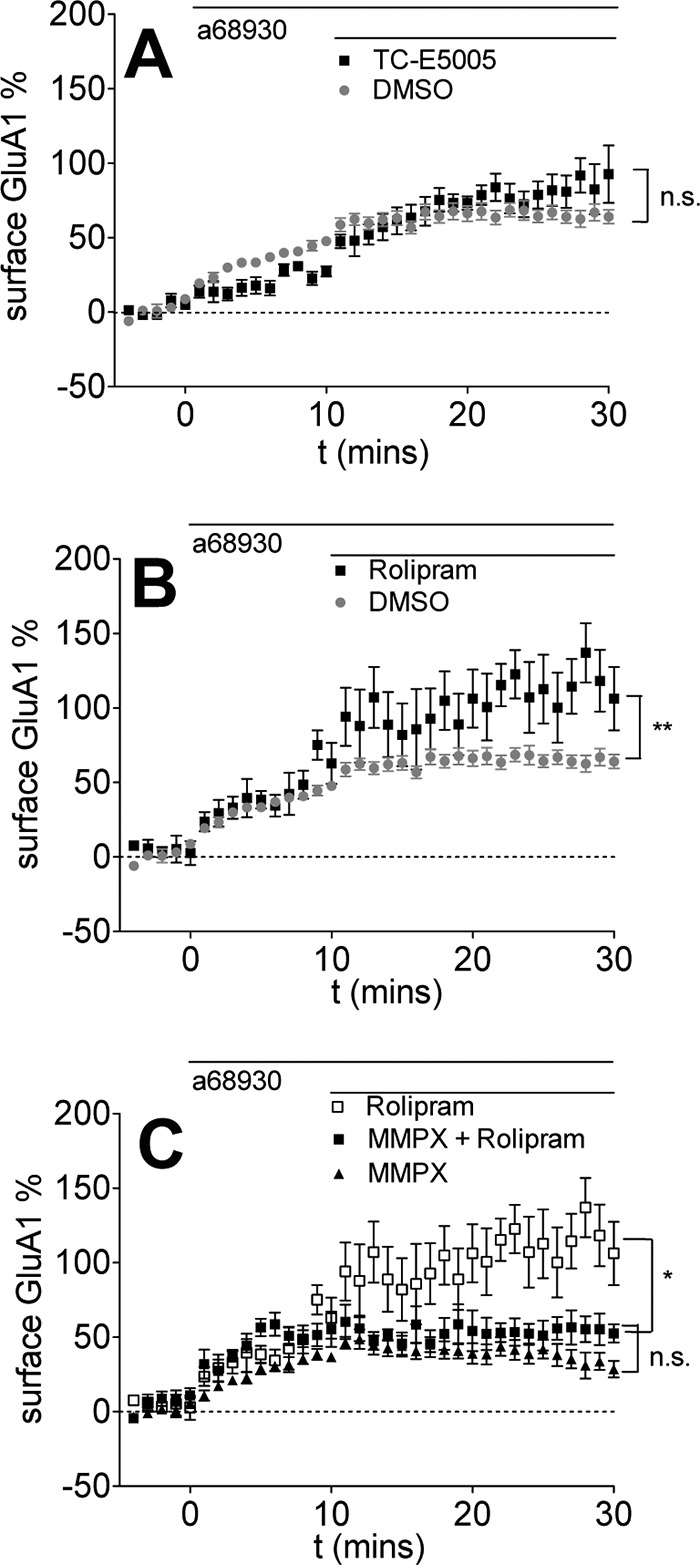FIGURE 6.

PDE1/PDE2 cross-talk regulation of surface GluA1 levels is not dependent on PDE10 or PDE4 and is specific for GluA1. Data are represented as mean ± S.E. normalized to baseline. A, PDE10 inhibition has no effect on D1R agonist-induced GluA1 surface insertion. 0.1 μm A68930 was added for 10 min, followed by DMSO (replotted from Fig. 1 for comparison) or the PDE10 inhibitor TC-E5005 (10 μm, black triangles, seven cells). n.s., p = 0.3658 (repeated measures two-way ANOVA, F1,32 = 0.84). B, PDE4 inhibition enhances surface GluA1 levels induced by D1R agonist treatment. 0.1 μm A68930 was added for 10 min, followed by DMSO (replotted from Fig. 1 for comparison) or the PDE4 inhibitor rolipram (10 μm, black squares, six cells). **, p = 0.0019 (repeated measures two-way ANOVA, DMSO versus rolipram, F1,31 =11.47). C, PDE4 inhibition fails to rescue the PDE1 inhibition-induced decrease in surface GluA1 levels. 0.1 μm A68930 was added for 10 min, followed by MMPX (replotted from Fig. 4 for comparison), rolipram (replotted from Fig. 6B for comparison), or MMPX + rolipram (black triangles, 10 cells). n.s., p = 0.1708 (repeated measures two-way ANOVA, F1,20 = 2.02).
